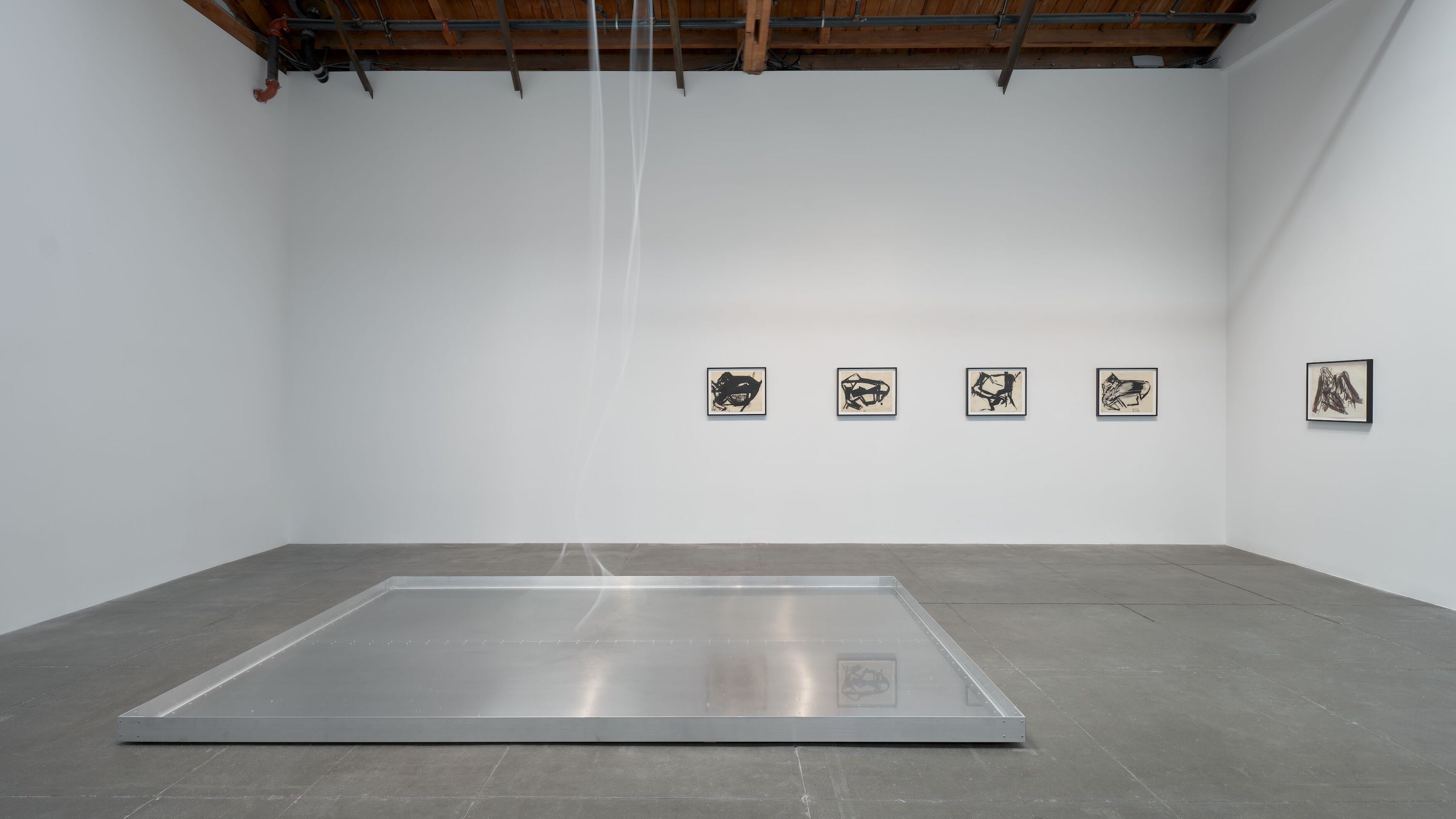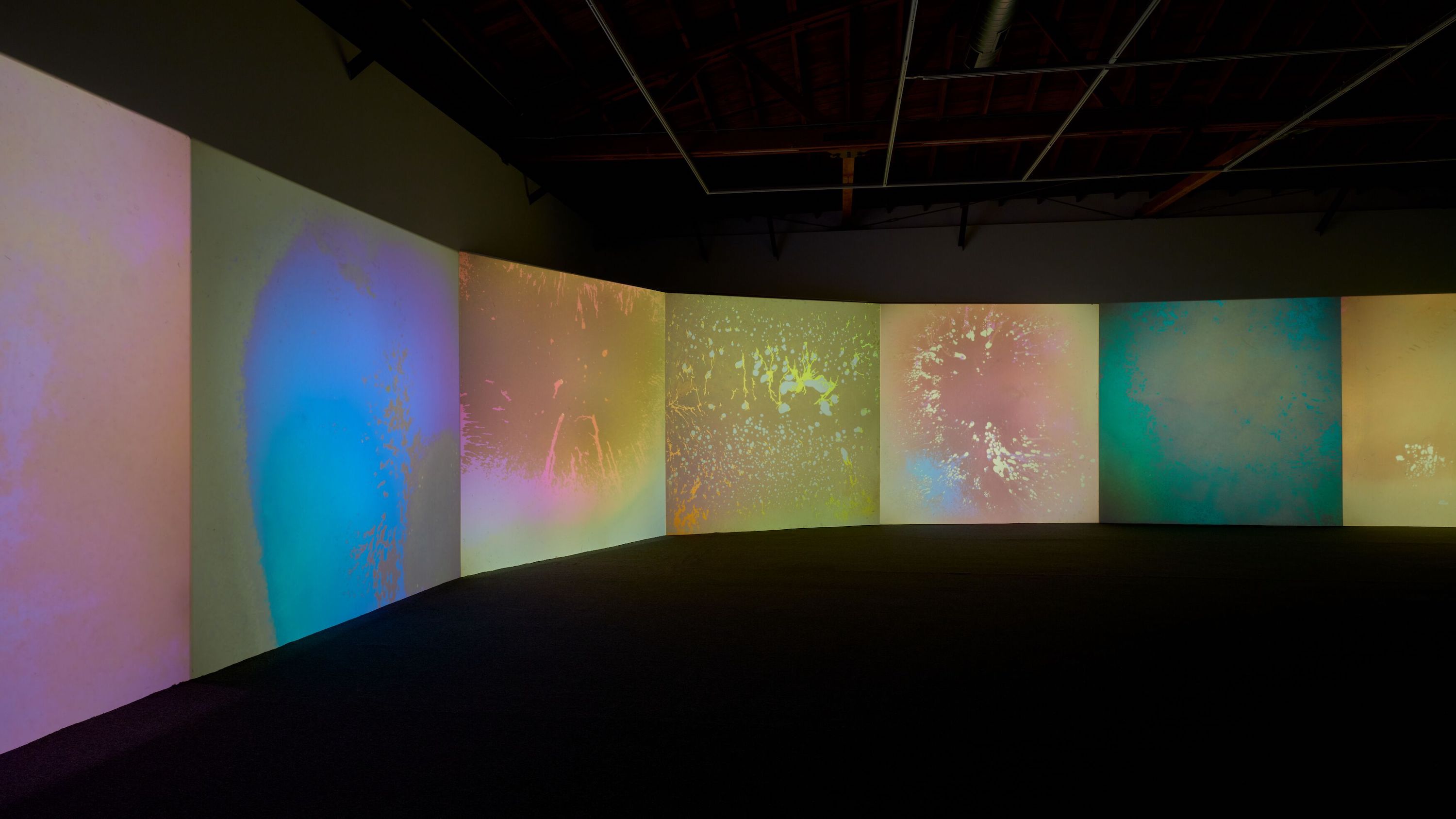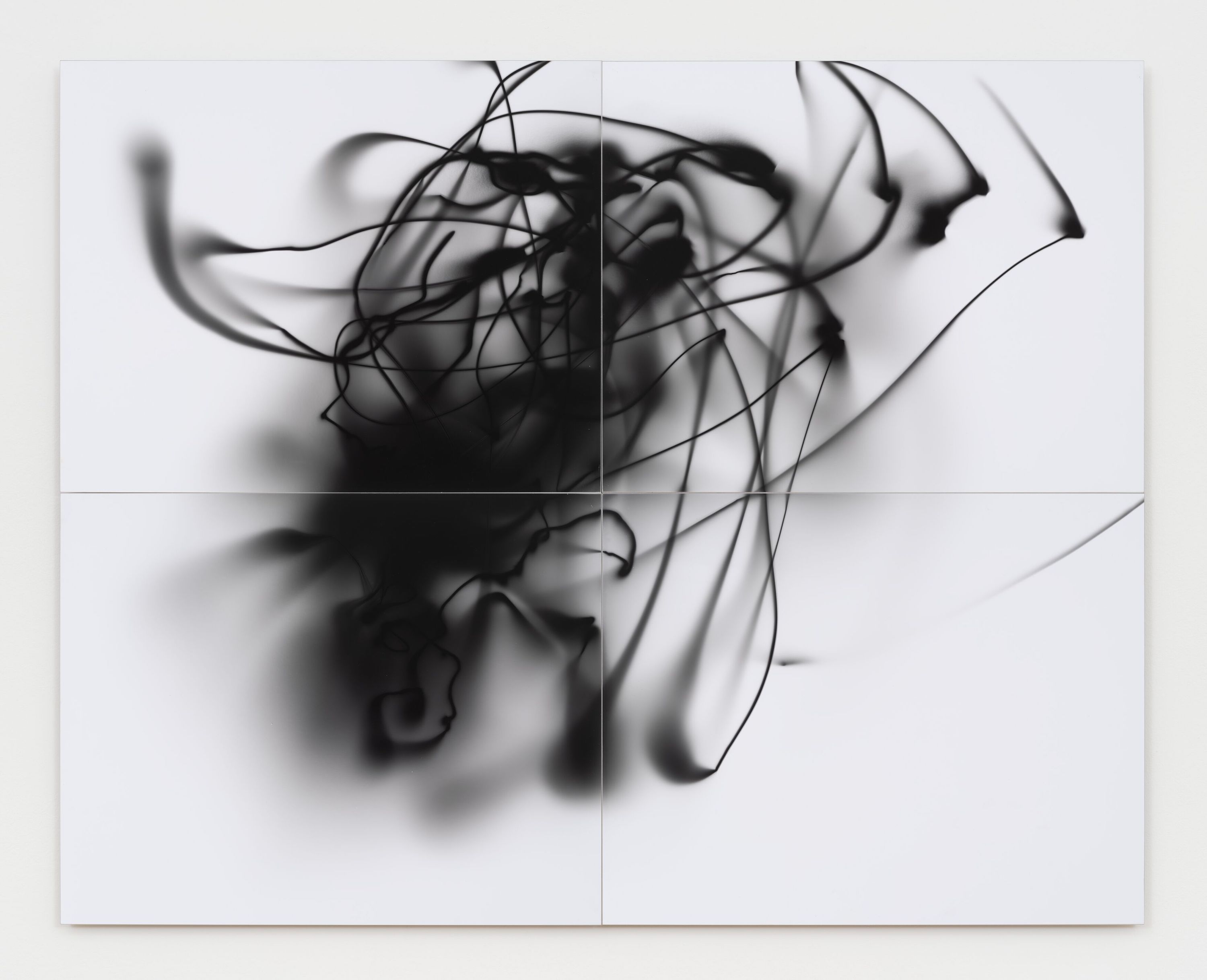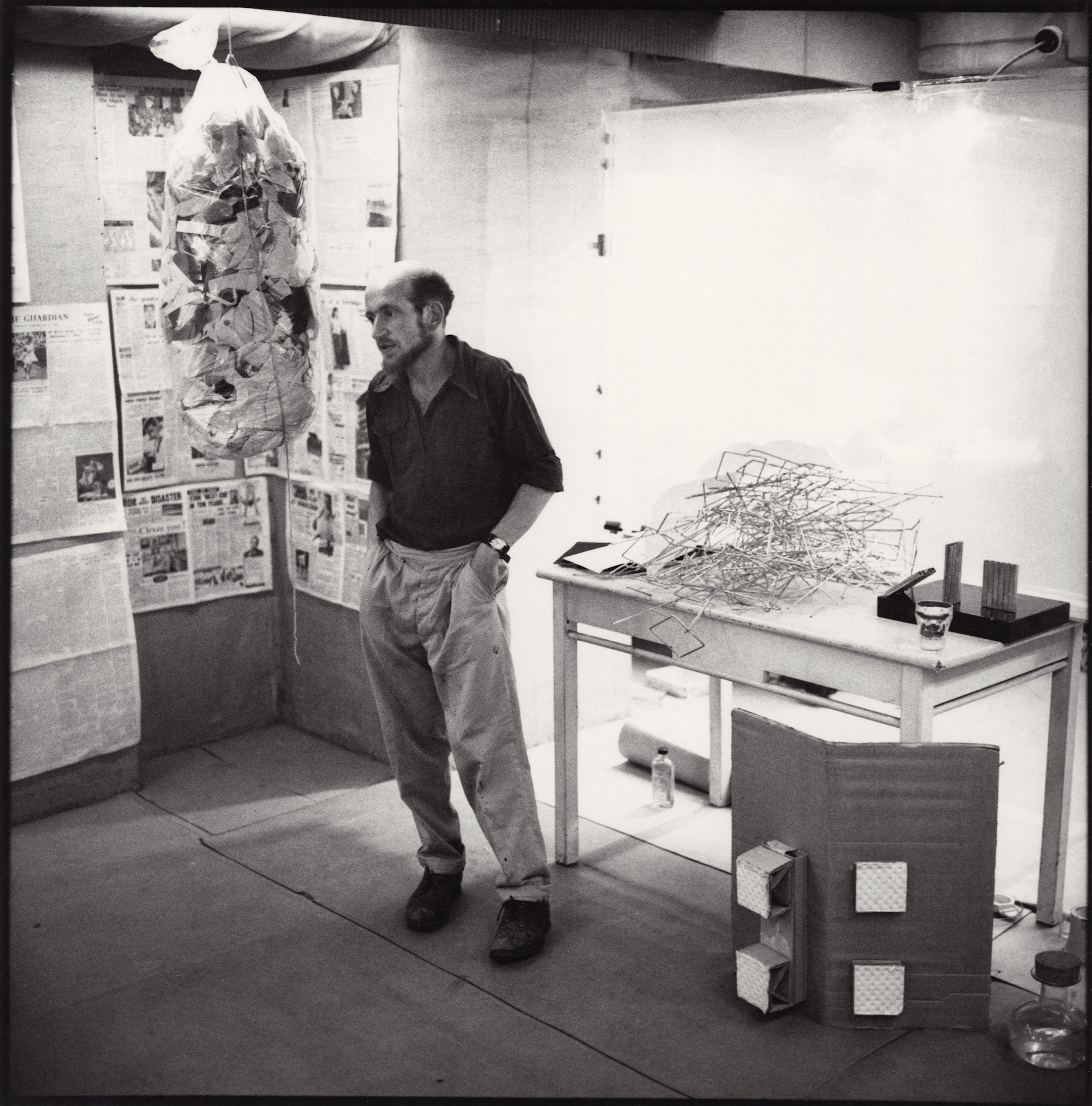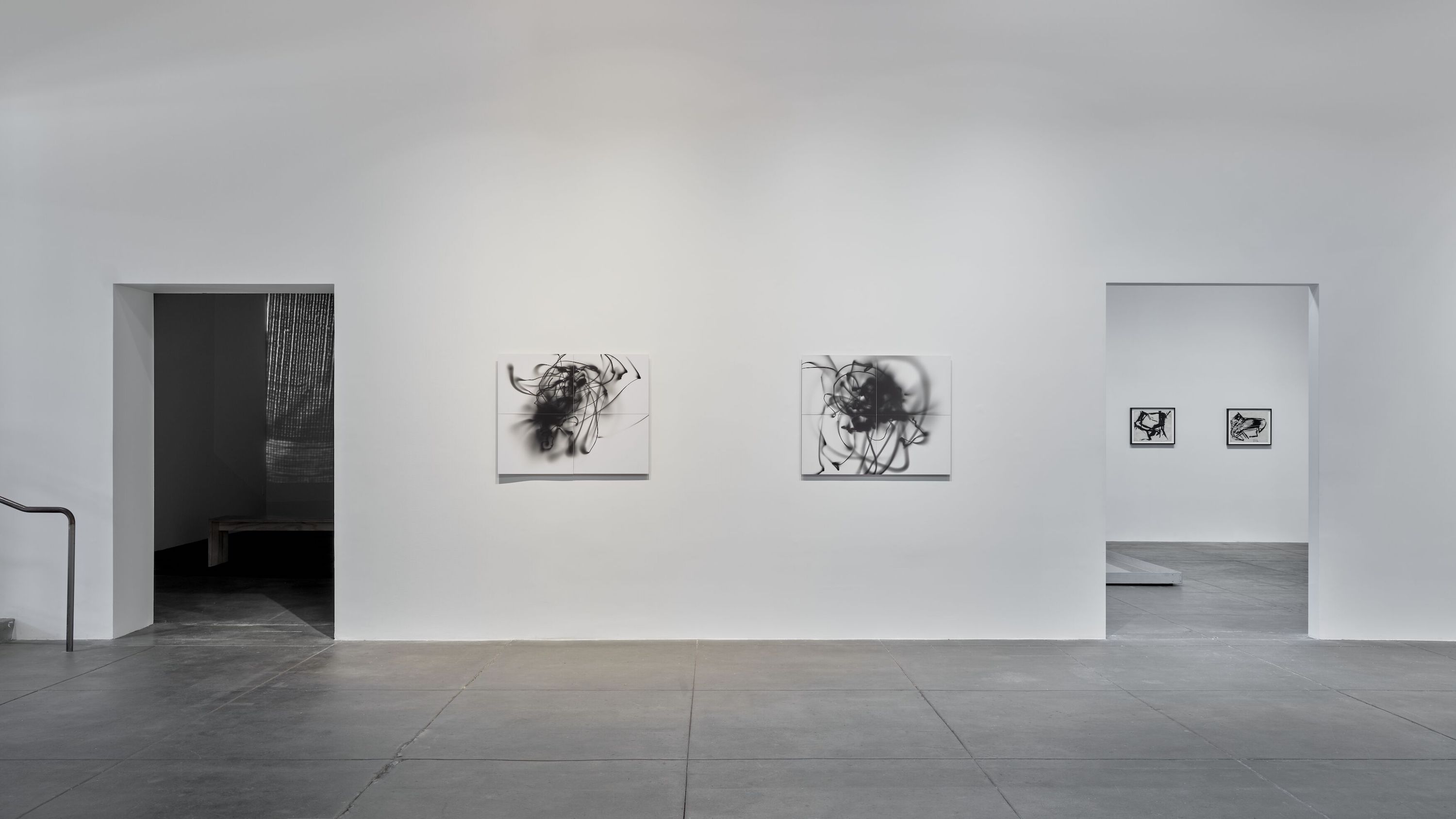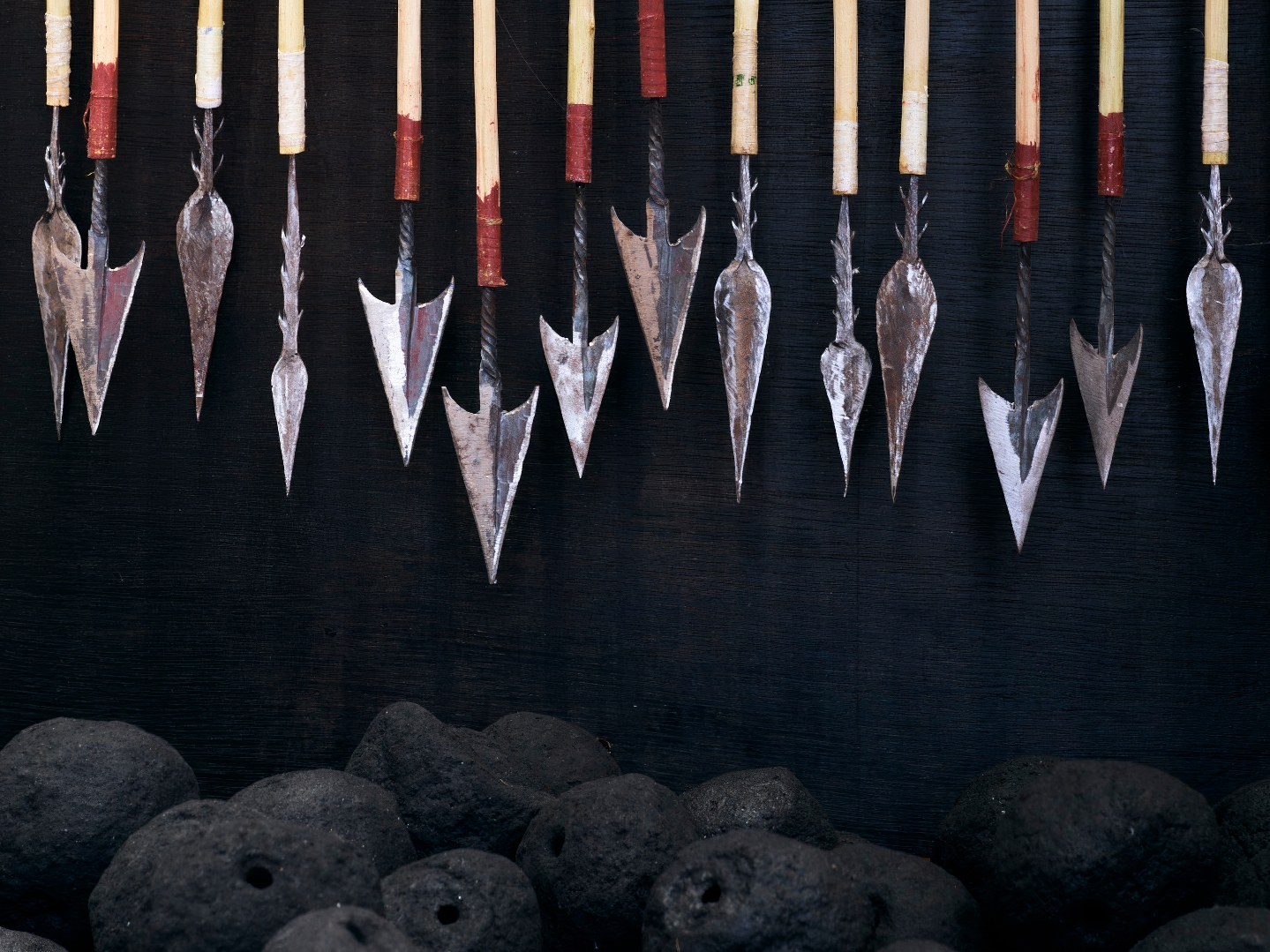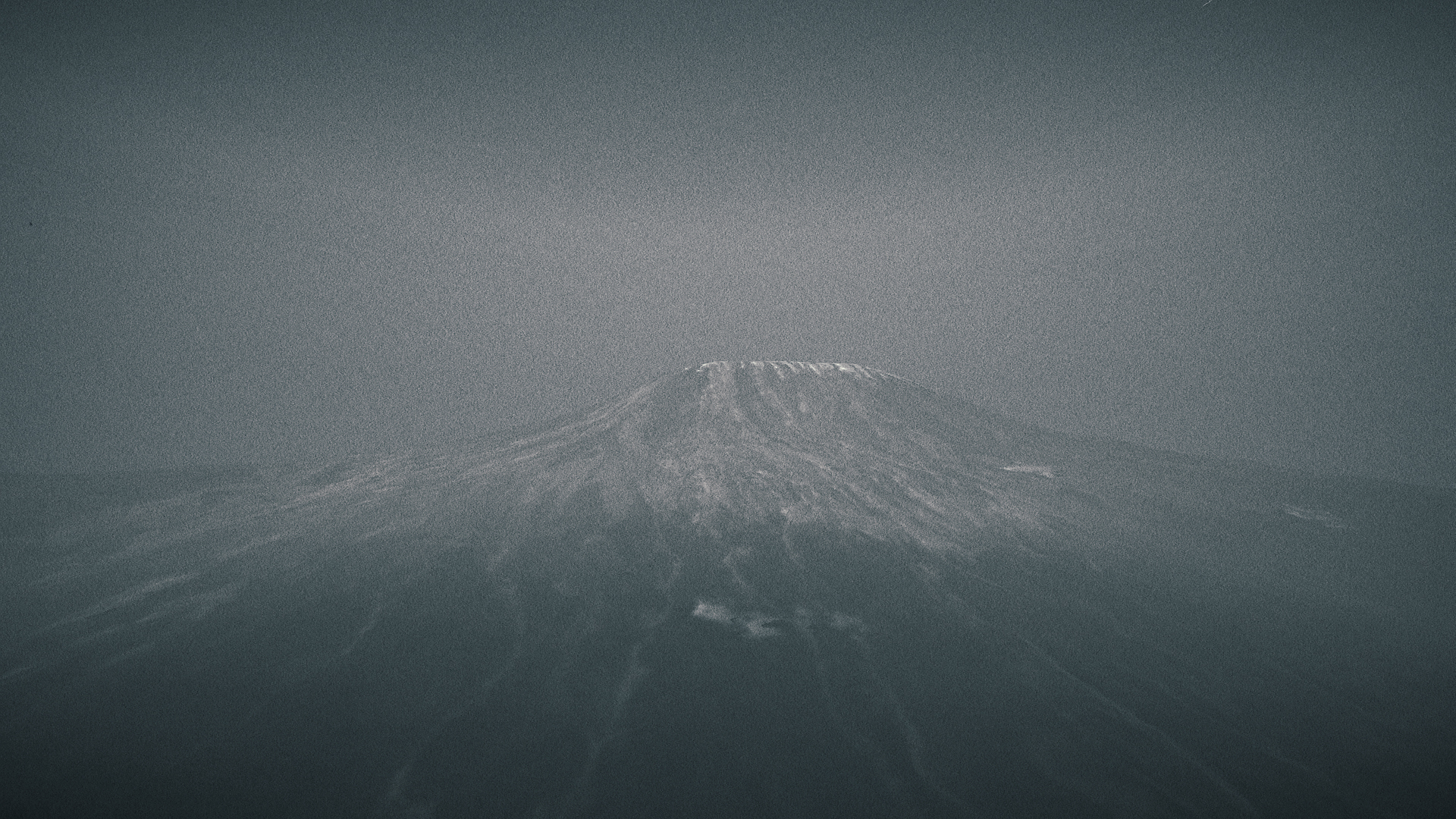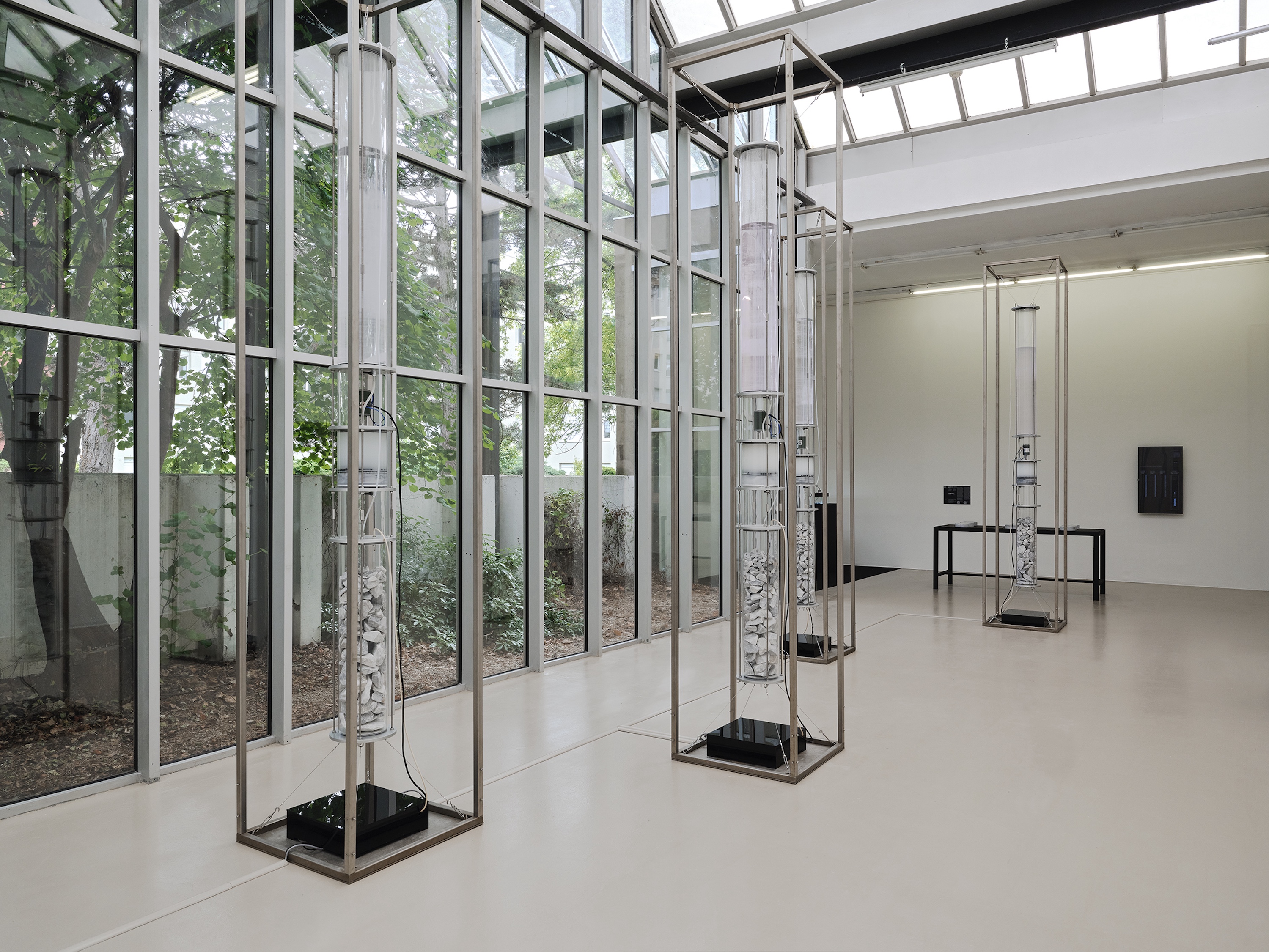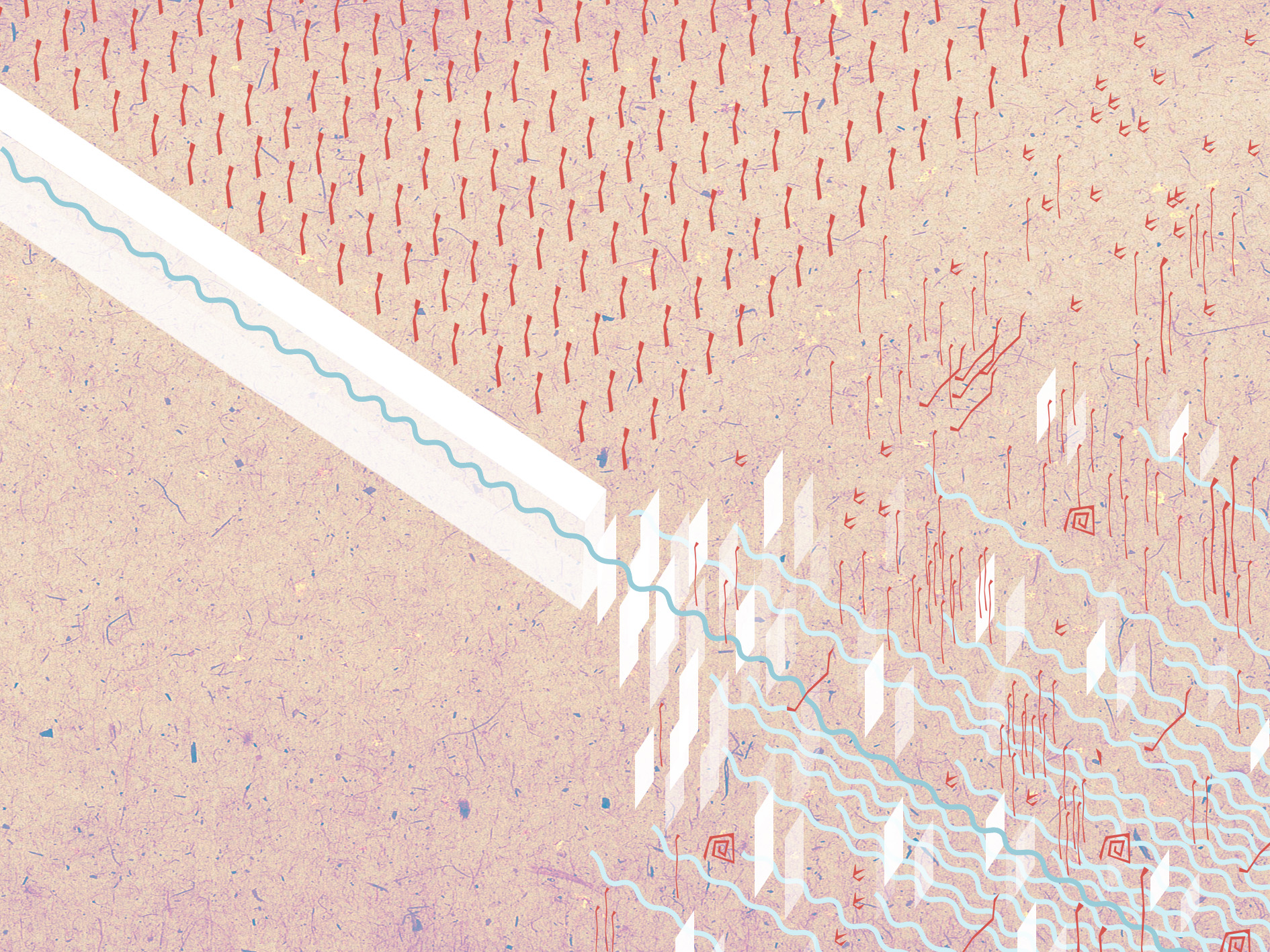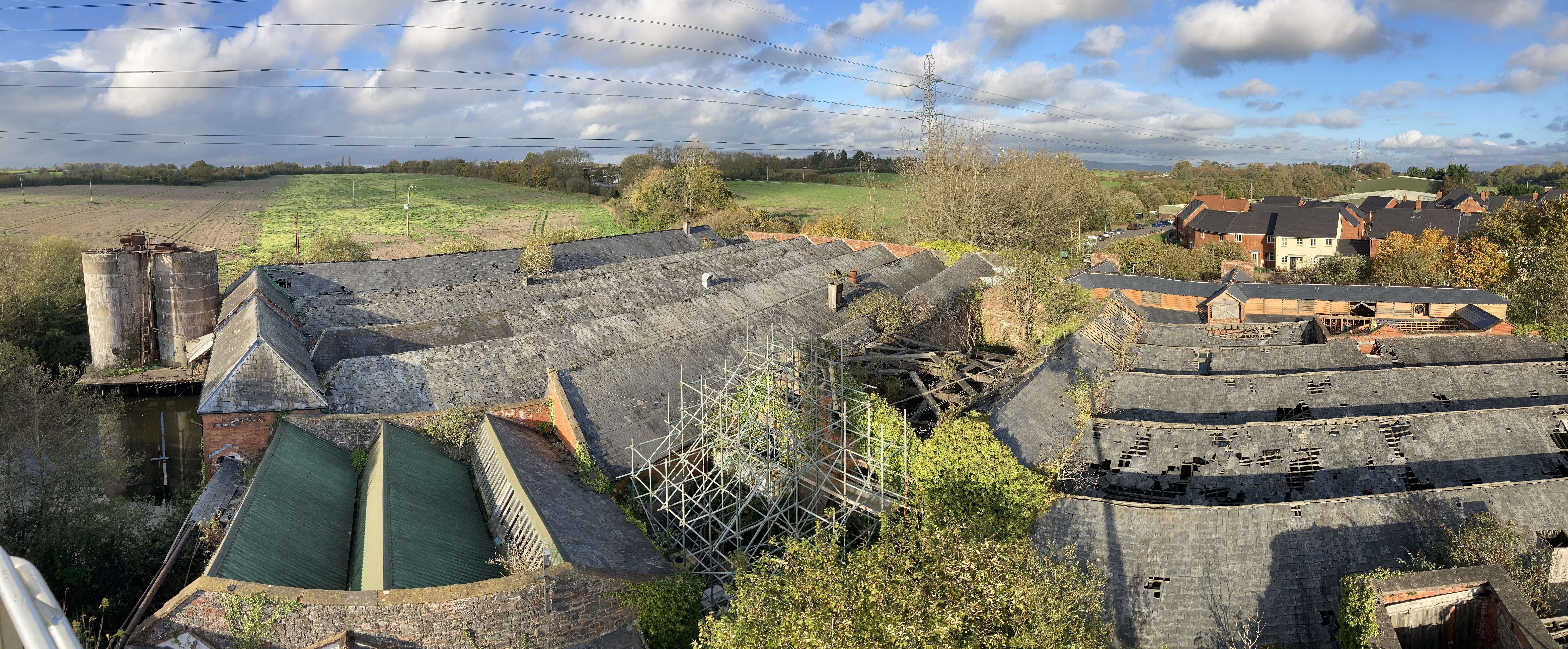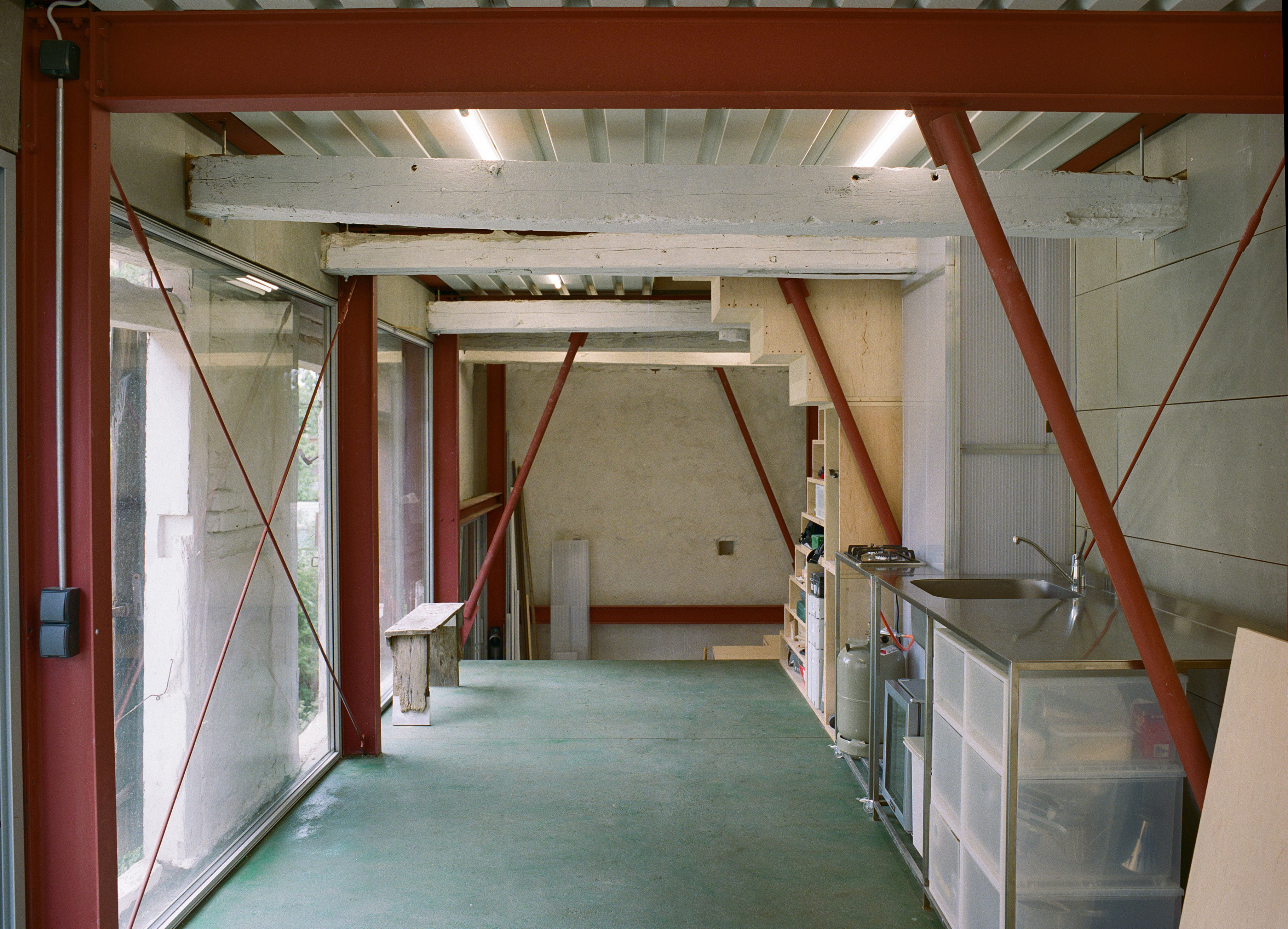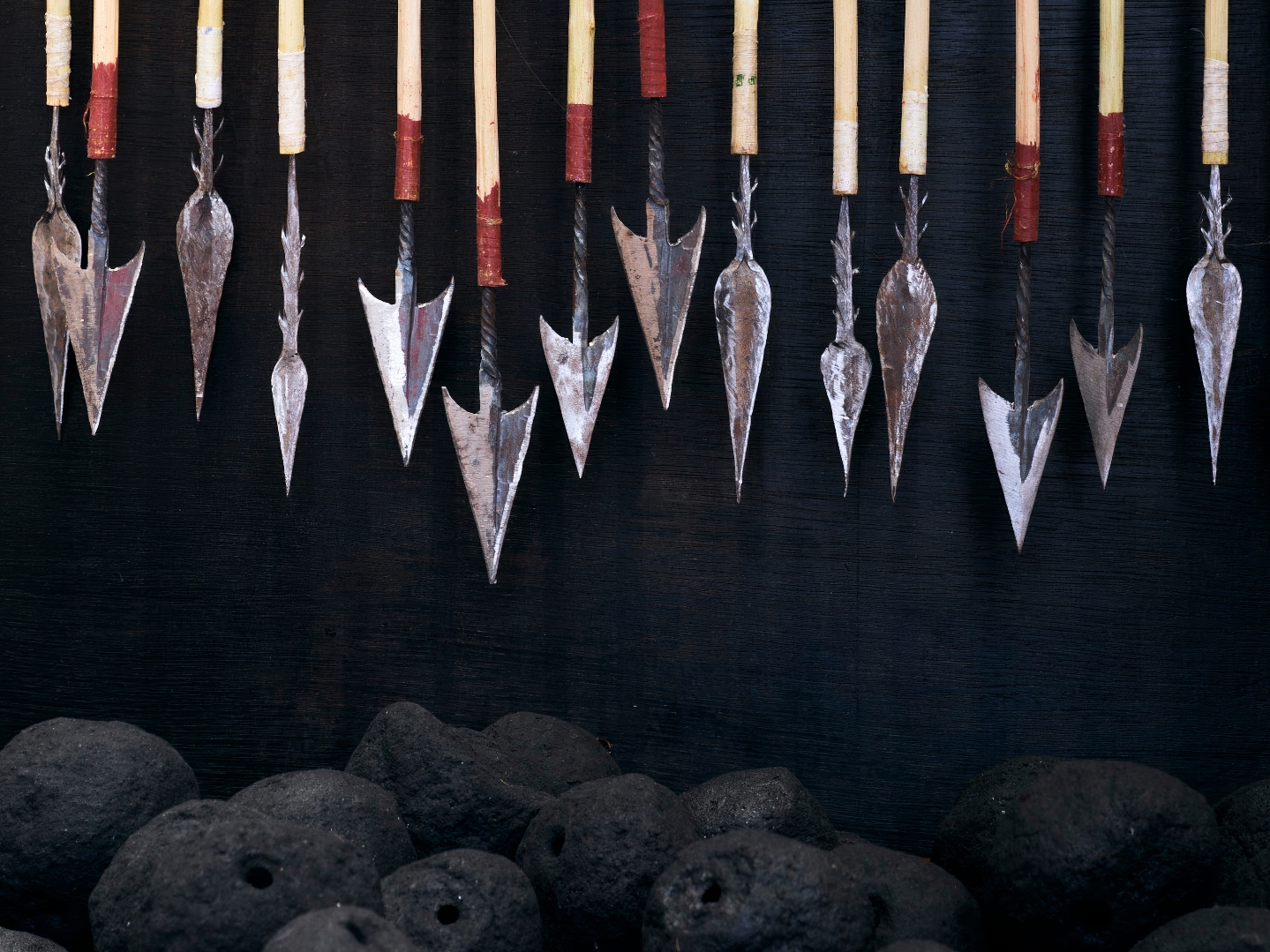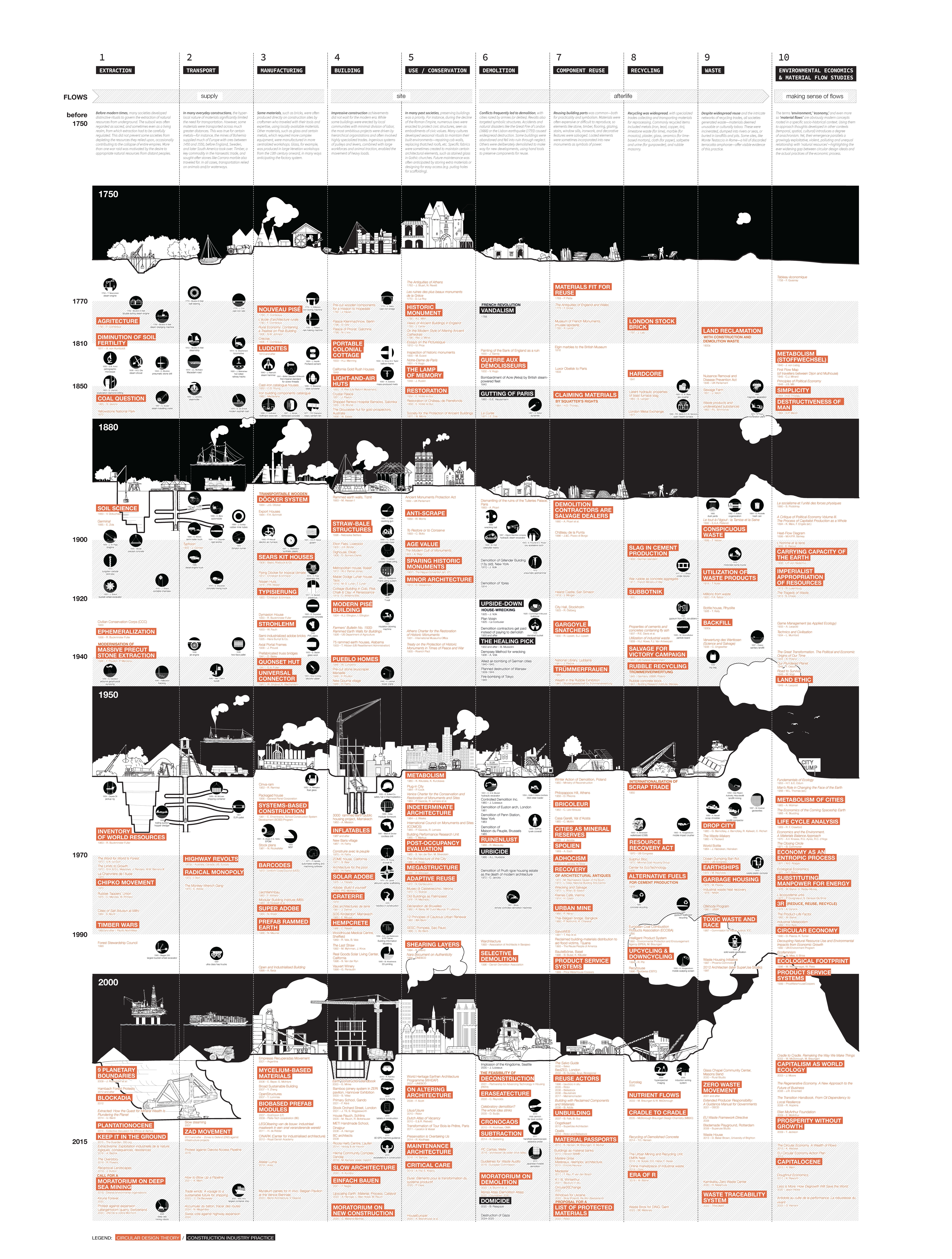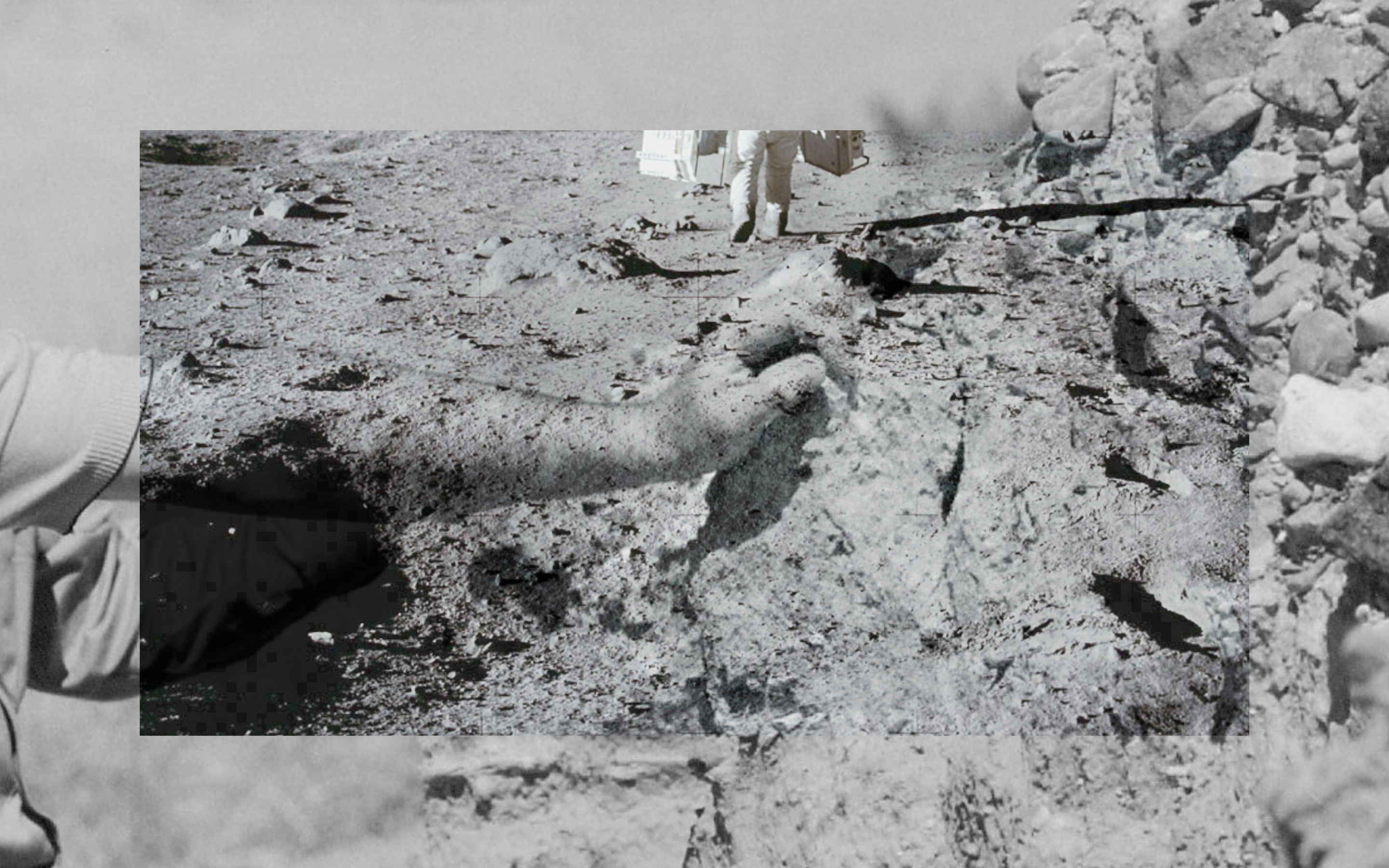September 13, 2024–January 12, 2025
Gustav Metzger hated cars. Not only for the pollution and noise, but because of their association with the hermetically sealed “gas vans” that Nazis used as mobile extermination chambers, diverting exhaust fumes into the vehicles’ interiors. Conceived but not realized for the United Nation’s first world conference on the environment in 1972, Metzger’s installation Project Stockholm, June (Phase 1)—finally executed for the Sharjah Biennial in 2007—included 120 cars, parked around a clear rectangular structure, their motors running constantly and filling the space with gas. The resonances with the United Arab Emirates (one of the world’s largest oil economies), and Los Angeles itself, site of this exhibition, are clear.
Metzger died in 2017, at the age of 90. When Hauser & Wirth started representing his estate three years later, it marked the first time that his work had been shown in one of the commercial galleries that he memorably described as “Capitalist institutions. Boxes of deceit.”1 “And Then Came the Environment” is one of more than seventy exhibitions and events in the Getty’s Southern California–wide PST ART: Art & Science Collide initiative. Featuring works made between 1961 and 2014, the show positions the artist in its press materials as an advocate of “environmental awareness and the possibilities for the transformation of society.”
The somewhat vague language of “transformation” belies the sharply articulated leanings of the artist in a book, published alongside the exhibition, of his interviews with Hans Ulrich Obrist between 1995 and 2017. It reveals a man who not only hated capitalism but discouraged the use of the word “environment” in favor of “damaged nature.” The show includes a film of Metzger’s iconic 1961 demonstration on London’s South Bank, where he and some architecture students stretched out large sheets of nylon. Metzger painted the nylon canvas with hydrochloric acid delivered through a spray gun, a live painting and protest against nuclear expansion. The film shows Metzger wearing a gas mask and closeups of the nylon tearing and deteriorating, revealing the cityscape behind it.
Other works align with the occasion for the exhibition. Metzger’s experiments with liquid crystal, his Dancing Tubes sculpture (1968/2024), some late-period light drawings—these “auto-creative” works and scientific objects demonstrate, importantly, another side to Metzger’s practice. Missing from the show, however, are the works and greater framing that would make clear the artist’s primary targets: industrial capitalism and the machinery of war. The book reaffirms this, thankfully—in it, Metzger outlines both his life story and his intentions—but in the exhibition, it’s not made immediately visible (or free) for the public. (Curiously, I Can Do Something, a newly commissioned animation by Justin Richburg, does more to this end than the show itself.2) That scientific knowledge and technology are instrumentalized to oppress and exterminate should be front and center in any show about this artist, who felt his work became more radical the older he got. For Metzger, the political and the scientific were inextricable.
Metzger’s early exposure to the Holocaust and Judaism was foundational to his work. As he told Obrist, “my concern with destruction and memory […] must be connected with this Jewish emphasis on the value of life and the value of every life.” Two works that Metzger cited as “central” to his practice are To Crawl Into - Anschluss, Vienna, Austria, 1938 and To Walk Into – Massacre on the Mount, Jerusalem, 8 November 1990 (1996). Meant to be installed in the same room, To Crawl Into is a large photograph placed on the floor, with a tarp over it. Audiences have to crawl under the tarp to see that it’s an image of Jews being forced to scrub a street in Vienna. To Walk Into is a large photograph placed on the wall, hidden by a linen curtain. Audiences have to walk behind the curtain to see that it’s an image from the Al-Aqsa Massacre of 1990, in which Israeli security forces killed seventeen Palestinians and injured more than a hundred at their holiest place of worship. At the current moment, the opportunity to engage with the totality and prescience of Metzger’s politics, and thus his art, is diminished by the limited scope of this show.
“We have the ability to take over the power that lies partly in the hands of the private galleries,” Metzger told Obrist. “I think this is a necessary step.” The tensions inherent in Hauser & Wirth presenting such an artist are clear, but the exhilarating exhibition that might have emerged from them turns out to be a somewhat innocuous affair. In his preface to the book, Obrist writes that Metzger “integrated his environmental agenda into the Serpentine by convincing us not just to make a show about ecology, but to put that mission at the heart of the institution.” In 2021, Hauser & Wirth—whose Los Angeles location contains a garden with vegetables, bee-friendly plants, and a chicken coop—pledged to cut its global carbon emissions by half over the next six years, in line with the UN’s Paris Agreement. It’s a step in the right direction. What comes next?
Gustav Metzger, “Manifesto World,” (7 October 1962). Reproduced in Mathieu Copeland, ed. Gustav Metzger Writings 1953-2016, (Geneva: JRP Editions, 2019), 87.

